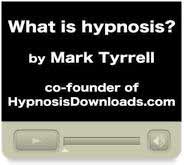The history of hypnosis with regard to its origin and theories is an eventful and fascinating one and calls for at least a cursory review here.
The Animal Magnetism Theory: The distinct concept of hypnosis was created by the charismatic 18th century Austrian healer Franz Anton Mesmer (1734-1815). He believed he could "store" animal magnetism as a ‘cosmic fluid’ in inanimate objects like iron filings or magnets and transfer it to patients to cure them of illnesses. Later he discarded the magnets and started using his own body as the store of the healing force. His success in inducing the trance (though not recognized as such), made mesmerism a cult around the world. It was indeed the forerunner of hypnotic suggestion.
The Electric Theory: Mesmer’s disciple, the Marquis de Puysegur, who introduced a new twist that the cosmic fluid was not magnetic but electric and that it was present in all living beings, including plants. His healing sessions were conducted in the natural environment.In the mid 1800s, a leading English physician, John Elliotson used the trance state to perform 1,834 surgeries painlessly. In India, during the same period, James Esdaile, a Scottish surgeon, performed many major and complicated surgeries like amputation of limbs using the ‘magnetic sleep’ as the only anaesthesia.
Nervous Sleep or Hypnosis: It was in the late 19th century that James Braid finally gave mesmerism a scientific explanation. He explained mesmerism to be a nervous type of sleep and coined the term hypnosis, derived from the Greek word hypnos, meaning sleep. Braid recognised hypnosis as a state of exaggerated suggestibility.
The phenomenon of divided mind: Pierre Janet saw hypnosis as a “dissociation” phenomenon, where a group of dissociated memories might develop into a second personality.
Jean-Martin Charcot (1825-1893), leading French neurologist of his day, regarded hypnosis as a pathological state of artificial hysteria.
Freud explained that a sort of paralysis of the will and power of movement took place in hypnosis. He thought that the power of hypnosis resided in the paralysis produced by the influence of an omnipotent person, on a defenceless, impotent subject!
Acceptance of hypnosis in medicine that we have today is largely owed to the efforts of pioneers in the experimental study of hypnosis, starting in the early 20th century. Foremost among the researchers were Clark Hull and his student, Milton Erickson. Hull's 1933 discussion of scientific research into hypnosis (Hypnosis and Suggestibility) is still considered a classic among scientific literature on hypnosis.
1935 saw the birth of medical hypnotherapy through Milton Erickson (1901-1980) who started using hypnosis on a large scale in his patients. He practiced and established many successful induction techniques like metaphor and indirect hypnosis.
Theodore Sarbinin in 1950 pioneered the ‘sceptical’ modern concept of hypnosis. Hypnosis was considered as a social-psychological alternative to the views that (1) a single distinctive neurological and psychological state underlies all hypnotic phenomena (Paris school of thought), and (2) that suggestions somehow mechanically produce responses without the participation of the subject (Nancy school).
In addition to Erickson and Hull, modern scientific research into hypnosis has been advanced through a period of intense experimental research in the late 1950's and early 1960's by notables such as J.P Sutcliffe, T.X. Barber, M.T.Orne, E.R. Hilgard and R.E. Shor. The work of these researchers had been particularly influential on the current scientific view of hypnosis, especially in the context of medical hypnotherapy.




